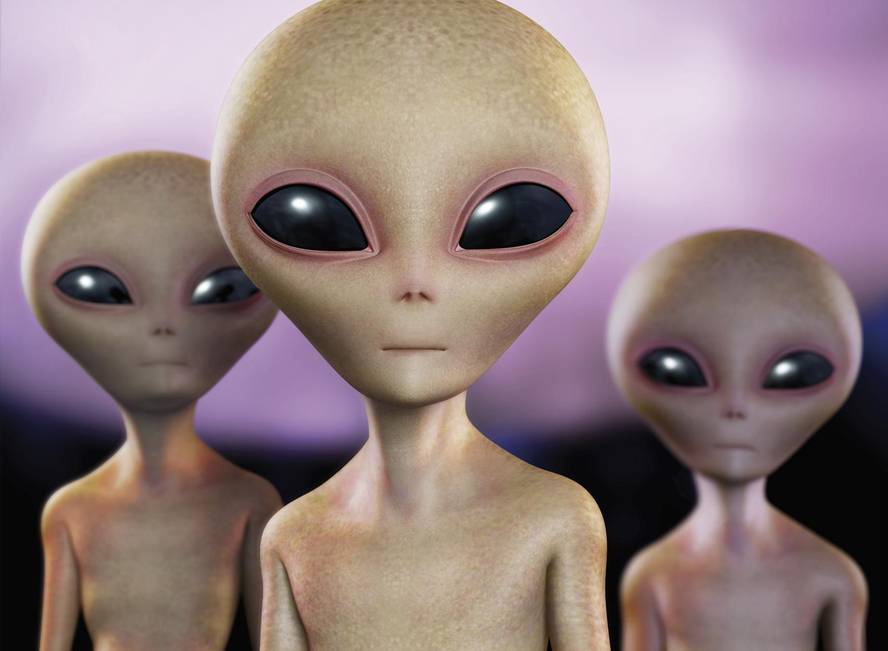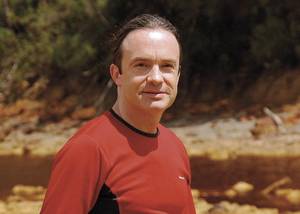Alien evolution
Despite the fact that in the aliens the expression “green little men” is widespread, Sergio L. Palacios does not think it is the most typical image. Palacios, professor of Applied Physics at the University of Oviedo, is also passionate about science fiction. Precisely, he uses science fiction to disseminate physics. And he says that aliens, in most cases, have been depicted with gray skin.
Yes, it recognizes that they have a human aspect: "Like us, they have two legs and two arms and, on the neck, the head. And the head is usually very large with respect to the body, as they are in fact not bodily." According to Palacios, this appearance does not conform to the law of gravity. "It seems that gravity is weaker than on Earth at the alien's place of residence, otherwise such a weak body could not resist the big head."
Palaces is also fixed in the eyes: "The face is similar to ours, they have a mouth in the same place as us and over two eyes. In most cases they are almond-shaped, very large and completely black, which suggest having little light on your planet."
According to Palacios, this aspect was born in 1947 in the autopsy of Roswell. That year, several American media released a strange event: In the village of Roswell fell a ship from a distant space. Inside were extraterrestrial beings, called autopsy. Apparently, these aliens had that aspect that has then become something usual: they were heads, thin body, with large eyes and shaped almonds.
With this aspect, of course, they appear in the video that was shown in 1995. This video was presented by businessman Ray Santilly as an autopsy recording. The video had a great impact, and although at first some considered it true, today almost nobody questions that it was a fraud.
At first, giant octopus
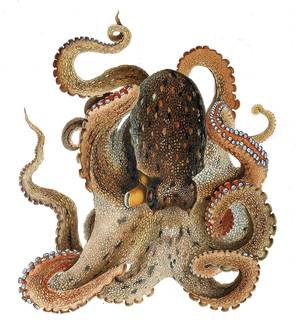
But before prevailing, Palacios recalls that aliens were represented in other ways. For example H. G. In the science fiction novel published by Wells in 1898, the War of the Worlds, aliens are Martian and octopus shaped. These octopus are giant and can hardly move, but they have the ability to emit destructive rays and are able to build lethal war machines. Precisely through them they try to conquer the Earth. Fortunately, Martians have no protection against terrestrial pathogens and die infected.
Although the novel is famous, it is even better known the radio novel based on it that Orson Wells made in 1938. In the adaptation, Martians land in New Jersey instead of in London. If not, they look the same as they did in the novel. Wells aired on radio as breaking news, causing panic in New Jersey and New York, where citizens believed that Martians had come to invade the Earth.
In the United States they were golden years of science fiction and alien stories. This flowering lasted until the 1960s and the aliens, in addition to novels and radio programs, appeared on television and cinema. According to Palacios, behind some of these fictional works were intended to frighten people and identify aliens with communists: "They wanted to convey the message that, even if they seem, they are different. They are our enemies because they want to destroy our property and our system."
Is there anyone outside?
By then, scientists saw that if they had aliens, they didn't have to be like us. However, in the 1970s, when they designed their attempts to communicate with them, they considered them intelligent, to some extent as if they were our equals.
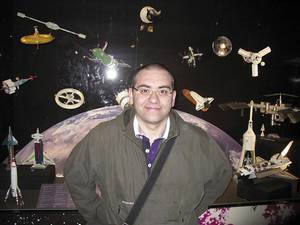
For example, a plate was sent on NASA's Pioneer 10 and 11 probes. The plates carried information about the Earth and our species, if any alien encountered any probe, it would be our case.
The plates were designed by two well-known astronomers and disseminators, Carl Sagan and Frank Drake. To the right is the probe itself as a reference, along with a naked man and woman. To the left there are rays coming out of a point. This point is the Sun and the stripes indicate the direction towards the most significant pulsar. Above it is indicated the change of spin of an electron and below the planets of the solar system and the planned path of the Pioneer probes. Of course, to understand all this, aliens should be intelligent and their intelligence should be similar to ours.
With the same purpose and focus, two gold discs were introduced into the Voyager 1 and 2 probes. Again, Sagan was the main record designer and introduced sounds and images that show the diversity of life and culture on Earth. As with Pioneer probe plates, their interpretation required intelligence similar to ours.
The messages emitted by the waves also showed the same vision. The best known message is that of Arecivo. It was broadcast in 1974 by the Arecivo observatory by radio waves. In the content, once again, Sagan participated and again had information about the Earth and our species. It had a total of 1,679 bits and were emitted in the direction of the globular cluster M13. Since then it has not been known.
But in addition to broadcasting, there has also been an effort to collect signals, as is the case of the SETI project. As its name suggests ( Search for Extratretrial Intelligence), it looks for signs of alien intelligence. Born in the 1970s, the project has had the participation of a large number of people, based on collaboration. However, at the moment they have not received results.
Possible, probable
In all these communication attempts, recipients, whatever their appearance, would have the ability to correctly interpret the signals emitted by us. Therefore, to some extent the emitters believed that their intelligence would be like ours.
However, those currently seeking aliens have a very different vision. They do not deny that there may be alien life. According to astrobiologist Carlos Briones, for example, man since he is human has wondered if he is alone in the universe. "Science has not been able to answer this question, but we know there are plenty of places to live. Accounting: There are at least 100 billion galaxies, each of which has 100 billion stars. By multiplying you get the astronomical number of stars. And half of them can have planets around them. Therefore, there are many possibilities to create life in some of them. However, the probability that these living beings are of our style is zero."
In Briones' view, the creation of intelligent living beings cannot be ruled out altogether, "although this is much more difficult than creating only life." But it is neither intelligent nor simple, today we have no trace of life: "At the moment we have to say that we are alone."
However, they continue to look for clues of life that may have or have ever been off Earth. They use the definition made by the NASA Institute of Astrobiology. According to him, life is a chemical system with permanence capacity that evolves as a consequence of the interaction of the environment.
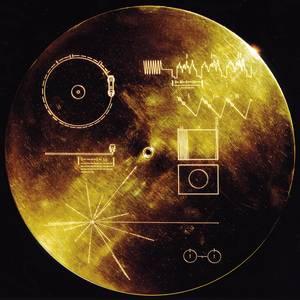
"The definition includes the characteristics that differentiate living beings from non-living ones," explains Briones. "Because living beings make copies of ourselves, but copies are not perfect, they have mutations, that is the essence of evolution. In addition, we have a metabolism, we exchange energy and matter, and thanks to it we survive. And we have something that differentiates us from the environment, for example a membrane."
Based on this definition, the search for extraterrestrial life has changed. Thus, biomarkers are currently being sought. They can be morphological or molecular.
Briones believes that the search for morphological biomarkers is "quite dangerous": "For example, there is a famous meteorite coming from Mars, the meteorite ALH84001. It appeared with fossils of bacteria. They later demonstrated that they were not bacteria, which shows the danger of a morphology-based search. That is why we seek molecular biomarkers."
Therefore, astrobiologists try to find molecules that clearly indicate that there is life or that it was in the past. "These molecules would not be produced without life," said Briones. And he continues to explain: "They are the basic molecules of Earth's living beings, the only type of life we know. Can there be another kind of life? Of course, there are no laws that force life to be based on DNA or protein. Therefore, there is a very interesting field of research that tries to answer the question: what chemistry could give life? ".
In search of water
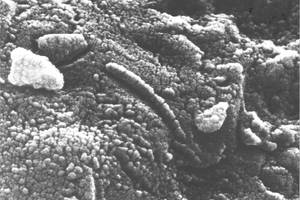
Even recognizing that other types of living beings may exist, Briones believes that the best option to create them is carbon-based: "Why? Because carbon easily forms bonds with other carbon atoms and other elements on which life is based, such as nitrogen, oxygen... In this sense it is much better than any other element. For example, in science fiction there are examples based on other elements such as silicon. But silicon does not offer the possibilities offered by carbon, as it is only associated with another silicon atom and oxygen."
In addition, there is another component that almost everyone considers essential to create life: water. Briones explains why: "Water is the best solvent and has a lot of properties that do better than any other liquid. For example, we know that in the satellite Titan of Saturn there is a lot of liquid methane and that there are oceans of methane, rivers and torrential rains. That is, there is a kind of terrestrial hydrological system, but of methane. There may be a proliferative life in this methane. We do not think how, because methane gives little play, but we have to be open to all options. However, according to the chemistry we know, water and carbon are the most appropriate components."
However, jumping from these basic components to proteins or DNA, Briones is unclear that they are essential: "I think it is possible that other macromolecules that are the pillars of extraterrestrial life form from water and carbon."
Thus, scientists seek water and carbon because they can give signs of alien life. Specifically, NASA's alien life search project was called Follow the water. However, Briones warns that water, although it is a vital condition, is not enough. "For example, on Mars we know that there is a lot of water and at the moment we do not know if it is alive."
Another factor that conditions the search for extraterrestrial life is distance. "They are finding a lot of exoplanets, some of which seem good candidates for life. However, at the moment we cannot find life in them systematically," explains Briones. Therefore, they seek it mainly on the nearby planets and their moons, but always considering that “eukaryotes, among them plants, animals and ourselves, are an accident of evolution”. That is, if there is extraterrestrial life, "there is much more chance of it being like bacteria than anything else, and, of course, the possibility of being like us is pure."
Go or come?
On the other hand, Briones mentions a risk in this search: "Despite trying to sterilize as best as possible the vehicles and appliances that are sent to other planets, there is always the risk that spores remain. If this spore supports the journey and has the possibility of developing in its new place of residence, it can be the case that later it found life in that place, but that it is not of origin but of the Earth". To avoid this, Brions considers it necessary to take strict sterilization measures. "This is the objective of the Planetary Protection regulation. But we cannot forget that total sterilization is impossible; perhaps on Mars we are creating a colony of bacteria that we have brought from Earth and are not aware of it."

The opposite could also occur, that is, that life was born out of the Earth, and from there came to Earth, for example, in a meteorite. Scientists investigate the evidence for this hypothesis. Meanwhile, these investigations are impacting fiction, "especially in literature," said Palacios. "In fact, the most demanding authors who write science fiction are scientists. Therefore, in many books, the starting point and the argument have a scientific basis, a great likelihood. In films, however, the image of the past endures. They've added mucus, blood and special effects, but they're basically the same movies as 50 years ago."
It seems that the typical image of aliens has evolved more in literature than in cinema, but if it has changed nowhere, it has been in science itself.



